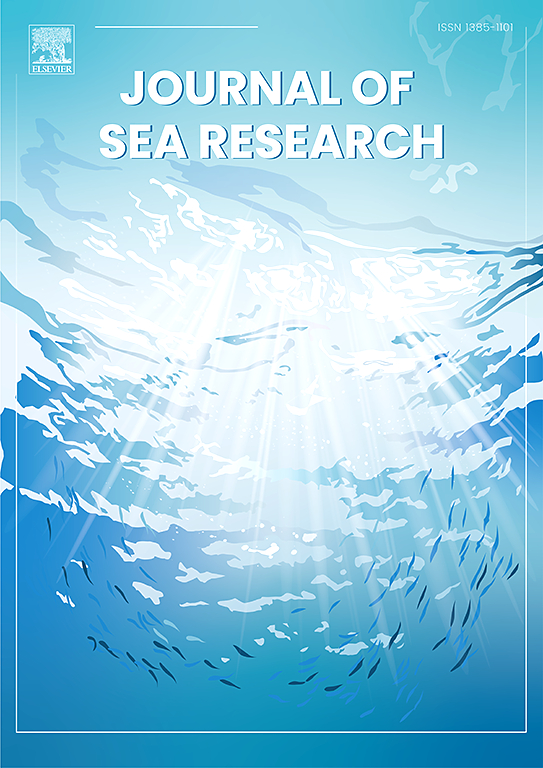Ecological risk assessment and source apportionment of heavy metals in sediments of a typical marine reservoir in the East China Sea: A case study of xuanmen bay marine reservoir
IF 2.9
4区 地球科学
Q2 MARINE & FRESHWATER BIOLOGY
引用次数: 0
Abstract
This study explores the distribution, ecological risks, and sources of heavy metals in the sediments of the Xuanmen Bay marine reservoir in eastern China. Surface sediment samples were collected during both the wet and dry seasons in 2023 and analyzed for eight heavy metals: copper (Cu), zinc (Zn), nickel (Ni), chromium (Cr), lead (Pb), cadmium (Cd), mercury (Hg), and arsenic (As), in addition to pH and total organic carbon (TOC). The ecological risk was assessed using the Potential Ecological Risk Index, while source analysis was conducted through Positive Matrix Factorization (PMF).
The findings reveal that heavy metal concentrations were generally higher during the wet season than in the dry season, with Regions I and II exhibiting the highest levels. Metal correlations were stronger in the wet season, displaying negative correlations with pH and positive correlations with TOC. Although the overall potential ecological risk in the reservoir was low, risk levels were heightened during the wet season, especially for Cd, Cu, and Hg in Region II.
PMF analysis identified industrial activities as the primary sources of heavy metal pollution, including metal processing, agricultural runoff, electroplating, non-ferrous metal smelting, and oil pollution resulting from the manufacturing of automobiles, machinery, and valve components. Notably, the metalworking and electroplating industries emerged as the most significant contributors to this pollution.
This study offers valuable insights and data for effectively managing heavy metal pollution in the Xuanmen Bay Marine Reservoir.

东海典型海相水库沉积物重金属生态风险评价及来源解析——以宣门湾海相水库为例
本研究探讨了玄门湾海相水库沉积物中重金属的分布、生态风险及来源。在2023年干湿季节采集了表层沉积物样本,分析了8种重金属:铜(Cu)、锌(Zn)、镍(Ni)、铬(Cr)、铅(Pb)、镉(Cd)、汞(Hg)和砷(As),以及pH和总有机碳(TOC)。生态风险评价采用潜在生态风险指数,来源分析采用正矩阵分解(PMF)方法。结果表明,雨季重金属浓度普遍高于旱季,其中I区和II区浓度最高。金属元素的相关性在丰水期较强,与pH呈负相关,与TOC呈正相关。水库总体潜在生态风险较低,但雨季风险水平升高,特别是II区Cd、Cu和Hg风险较高。PMF分析确定工业活动是重金属污染的主要来源,包括金属加工、农业径流、电镀、有色金属冶炼以及汽车、机械和阀门部件制造造成的石油污染。值得注意的是,金属加工和电镀工业成为这种污染的最重要贡献者。本研究为玄门湾水库重金属污染的有效治理提供了有价值的见解和数据。
本文章由计算机程序翻译,如有差异,请以英文原文为准。
求助全文
约1分钟内获得全文
求助全文
来源期刊

Journal of Sea Research
地学-海洋学
CiteScore
3.20
自引率
5.00%
发文量
86
审稿时长
6-12 weeks
期刊介绍:
The Journal of Sea Research is an international and multidisciplinary periodical on marine research, with an emphasis on the functioning of marine ecosystems in coastal and shelf seas, including intertidal, estuarine and brackish environments. As several subdisciplines add to this aim, manuscripts are welcome from the fields of marine biology, marine chemistry, marine sedimentology and physical oceanography, provided they add to the understanding of ecosystem processes.
 求助内容:
求助内容: 应助结果提醒方式:
应助结果提醒方式:


